Copland and Lye
by Catherine MacCaskill
Copland and Lye began business in 1873 as William Copland and John Lye, originally in the Cowcaddens area of Glasgow, with a move to the corner of Sauchiehall Street and Wellington Street five years later. The Sauchiehall Street store was called Caledonian House and was an impressive building.
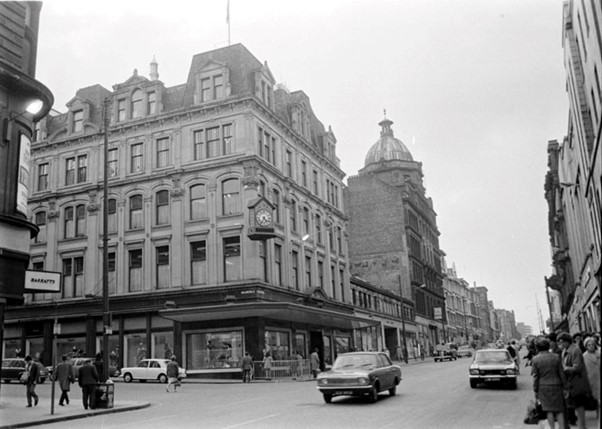
Working Conditions
There was a large staff of both males and females and the ‘Welcome to Coplands’ booklet given to new staff makes interesting reading, with an introduction of ‘much of your life will be spent here, we want you therefore to be happy in your work.’ There were good conditions such as, following 12 months service by 1st April, two working weeks’ holiday with full pay, and sick pay was provided, as was absence pay for bereavement of a close relative. Wages were paid fortnightly.
Staff wages were, of course, not equal for men and women. Mr David Todd, age 24, of the Gents Department, earned £4/7/6 (four pounds, seven shillings and sixpence) and Miss E W Robertson of the Bags Department earned £2/5/- (two pounds and five shillings) per week, no year is recorded for these wages.
Mrs Henry started in the Hosiery Department on the 22nd November 1948 on a wage of £3/3/- (three pounds, three shillings) per week, as was Mrs Burns in the Toy Department. Mrs McHaffie from Govan started on the 22nd November 1948 as a waitress and was paid £2/11/- (two pounds, eleven shillings) per week. Mr George Barr of Shawlands was a new start on 8th November and is recorded as being paid £5 as Santa Claus, the year is not recorded. A fully qualified minimum wage for hairdressers in 1946 was £9 fortnightly, and commission was 10% of takings up to £12 a fortnight.
A staff canteen was provided but with no discount for staff and if they went into the canteen, they had to wear outdoor clothes, i.e. coat and hat.
Dress code for female staff members was black dress or costume and stockings had to be worn. Items to avoid were cardigans, furry boots, ostentatious jewellery and heavy make-up. There is no record of a dress code for male members of staff. In some sections overalls were provided.

The Millinery and Fashion Department at Copland & Lye, circa 1911
There is a record book of staff leaving their employment for various reasons. Ina Currie of Dorset Street left in 1941 to go to work in munitions; her employment stay in Girls Clothing was from 26/3/1937 to 30/8/1941. Annie Shannon of Bellshill left in 1937 to join the Salvation Army, her employment stay in the Millinery Department was from 7/4/1931 to 14/8/1937. Ella Beech from Eveline Street left in 1928 to go to Canada, her employment in the Upholstery Department was from 3/12/1919 to 30/6/1928, and Peggy Carey of Argyll Street left in 1933 to be married; her employment stay in the Girls Outfitting Department was from 5/9/1919 to 15/7/1933.
There was only one dismissal recorded, a female member of staff who worked from 18/3/1935 to 9/5/1936. There is no record of why she was dismissed.
Staff travelled from many places across Glasgow including Govan, Shawlands, Possilpark, Bearsden, Govanhill, Springburn and Eaglesham. Paisley was another area staff travelled from, so it can be taken that wages and conditions were a big incentive as most people of the time would have worked locally.
Fashion Departments
Sales catalogues from the years 1891, 1906. 1907 and 1908 show a wide variety of goods from a dyed brown pony trimmed sable squirrel coat costing 33 guineas (a guinea was one pound one shilling), to a hat pin at one shilling and sixpence halfpenny – roughly 9 pence in today’s money.
Furs were obviously big business with ‘Rich sable stoles in all the latest shapes with muff to match’, which included ‘A charming fur set in pointed fox with muff to match with head and tails, stoles‘, were priced from £4/17/6 (four pounds seventeen shillings and sixpence) and muffs from 65-/ (sixty-five shillings – roughly £3.75 today). Real sealskin coats could be bought for 10 to 60 guineas.
Wedding trousseaux ranged from £10 to £50 – the £10 trousseaux included 6 chemises, 6 pairs of drawers, 6 nightdresses, 4 slip bodices, 4 camisoles, 2 pairs of corsets, 4 flannelette skirts, 3 cotton skirts, 1 flannel dressing gown, 1 flannel dressing jacket, 1 dozen diapers, 1 band, 1 pair stocking suspenders, 4 pairs of stockings, 1 dozen handkerchiefs, 1 nightdress case and comb bag. The main difference in the £50 trousseaux was the silk skirts and the tea gown with 18 French chemises! Corsets were ‘real whalebone’. Stock ranged from French, German and English-made stays.
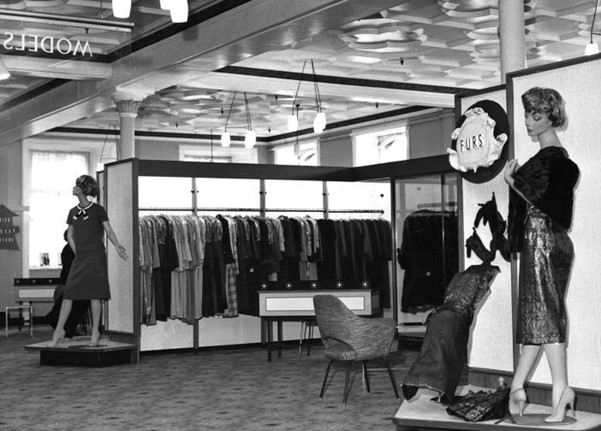
Adverts for ladies were for ‘smart frocks’ for seaside or country wear, theatre and dinner blouses and mantles, cloaks, capes and jackets. For men, lounge suits in shades of grey and brown Scotch Tweed ranged from 45/- (forty-five shillings) to 55/- (fifty-five shillings), with Dunlop Golfwear allowing you to play in any weather because ‘these garments are rubberless weatherproofed by the special Dunlop process’.
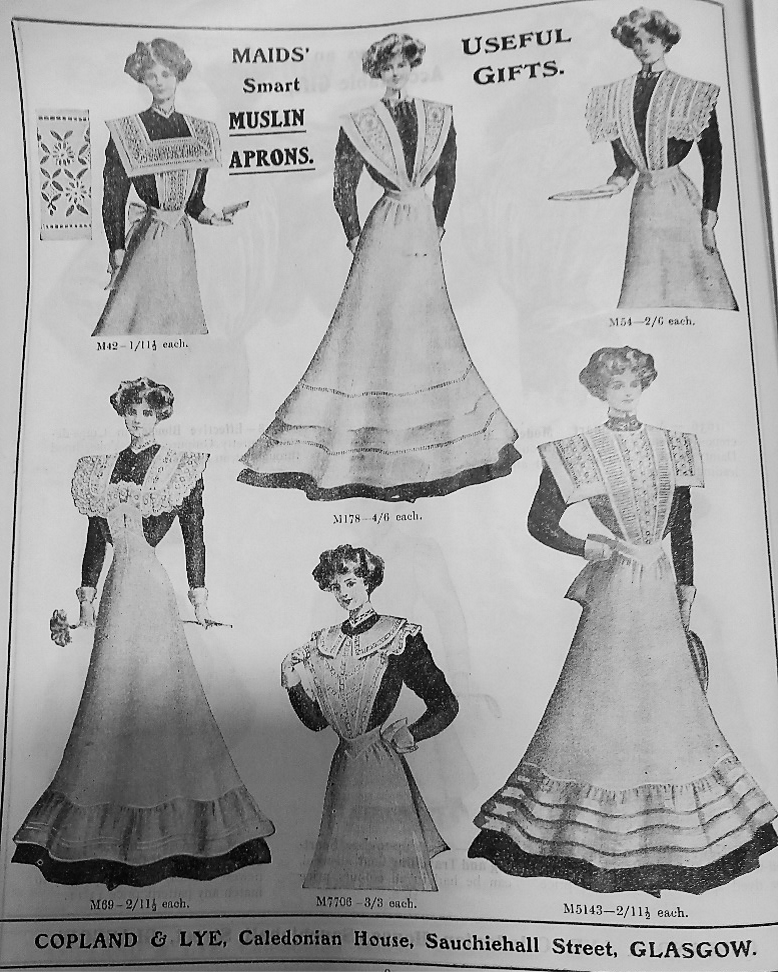
Children’s bathing costumes were made from serge, stockinette and drill, whilst gymnastic costumes (presumably for school) included knickers and tunics made from good lasting serge.
In a ‘know your place’ kind of way, we move on to muslin aprons for maids. There were of various styles costing from 1/11 (one shilling and eleven pence) to 4/6 (four shillings and six pence). A tremendous variety of servants aprons were advertised in new designs and shapes.
Fabric called ‘Dayella’ was advertised for children’s wear. It would seem to be an invincible product with the advert stating ‘Dayella wears and washes and always looks like new and if it shrinks, we will replace’. This too may have been more for the working-class mother as it seems doubtful someone buying a 60-guinea coat would have sat at a sewing machine!
There was an autumn fashion show in 1949, in aid of Erskine Hospital and the Glasgow and West of Scotland Association of Girls Clubs, where the newest ideas from Paris and London were shown. This covered Monday 10th to Friday 14th October, with three parades daily at 11am, 2.30pm and 4.15pm, in the restaurant. Tickets, which include tea served during the show, were 4/- each (four shillings).
Books, Toys and Games Departments
In 1904 the Book Department had been extended due to greatly increased trade and was open all year round. Children’s Picture Books were advertised as ‘free from objectionable advertisements on the covers or inside and are ‘Best Classed Goods’ ’. Prices ranged from 4d (four pence) to 4/11 (four shillings, eleven pence). The Stationary Department, in 1904, sold playing cards at all prices for ‘Whist, Bridge, Belique and Patience’
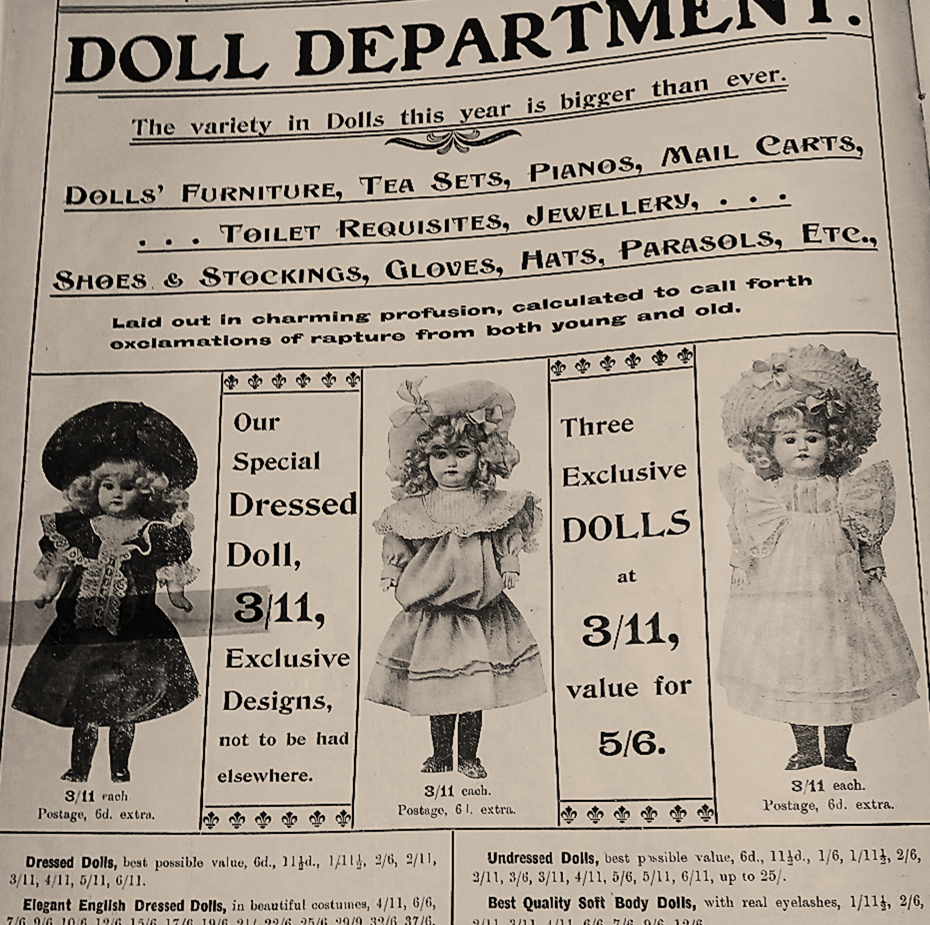
In 1905, a Toy Bazaar and Fancy Fair was advertised on the basement floor with ‘a gigantic and gorgeous exhibition of amusing, instructive and scientific toys’. These ranged from ‘the funny diver, Ko-Ko’, who moved up and down in water powered by air pressure, costing 11 and a half pence (just under a shilling) with a halfpenny postage. There was a Harmless Rifle with rubber darts costing 2/11 (two shillings and eleven pence). The Doll Department had specially dressed dolls for 3/11 (three shillings eleven pence) ‘not to be found elsewhere’. Dolls’ furniture, tea sets, pianos, mail carts, toilet requisites, jewellery, shoes and stockings, gloves, hats, parasols, etc., were all ‘laid out in charming profusion, calculated to call forth exclamations of rapture from both young and old’. Under ‘Science Toys’, there was a complete telephone apparatus for 15/6 (fifteen shillings and six pence).
New and original games included parlour cricket, coker nut throwing as well as Ludo, Snakes and Ladders, Draught boards and Dominoes.
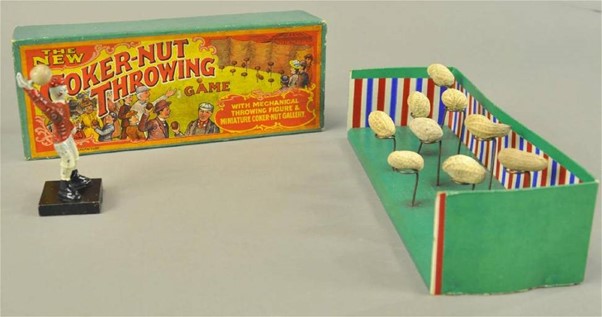
Copland and Lye also sold carpets and furnishings, including curtains and bedding, with china crockery and cutlery having a floor to itself. This must have been a massive store and perhaps quite daunting to the ordinary shopper in its earlier days. It also had a mail order and dispatch department, and catalogues would have been available to more distant customers. Their delivery vans were driven by uniformed drivers who looked like chauffeurs!
The End of an Era
Sadly, this glamorous store that originated in a now bygone age closed its doors in 1971. By then it was owned by the Ogg family. The building had lost its decorative ironwork by the time it was demolished in the 1970s to make way for the Sauchiehall Centre, and Campbell Ogg had gifted the impressive clock from the corner of the building to Milngavie Town Council, to be restored and re-erected in the town centre in 1981.
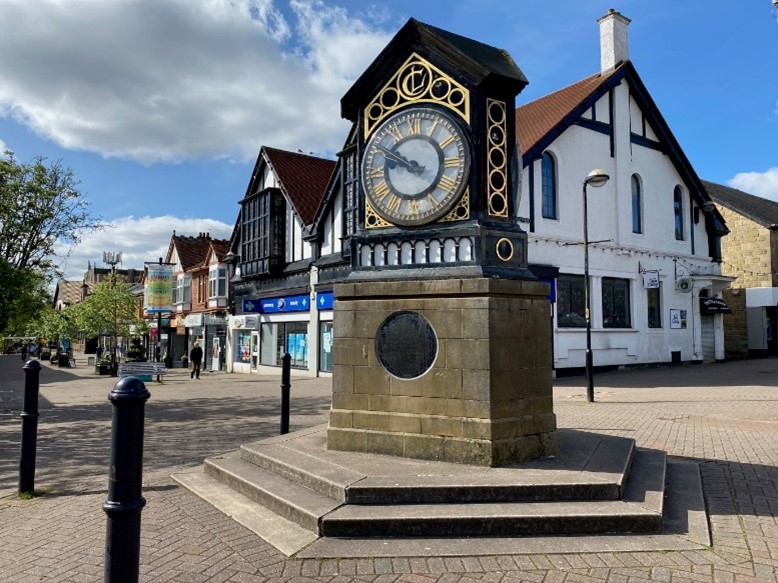
If you wish to learn more about this wonderful department store, which was a mainstay visit on any stylish Glaswegian’s shopping trip, Copland’s legacy and fashions live on, preserved in the business records held at Glasgow City Archives.





